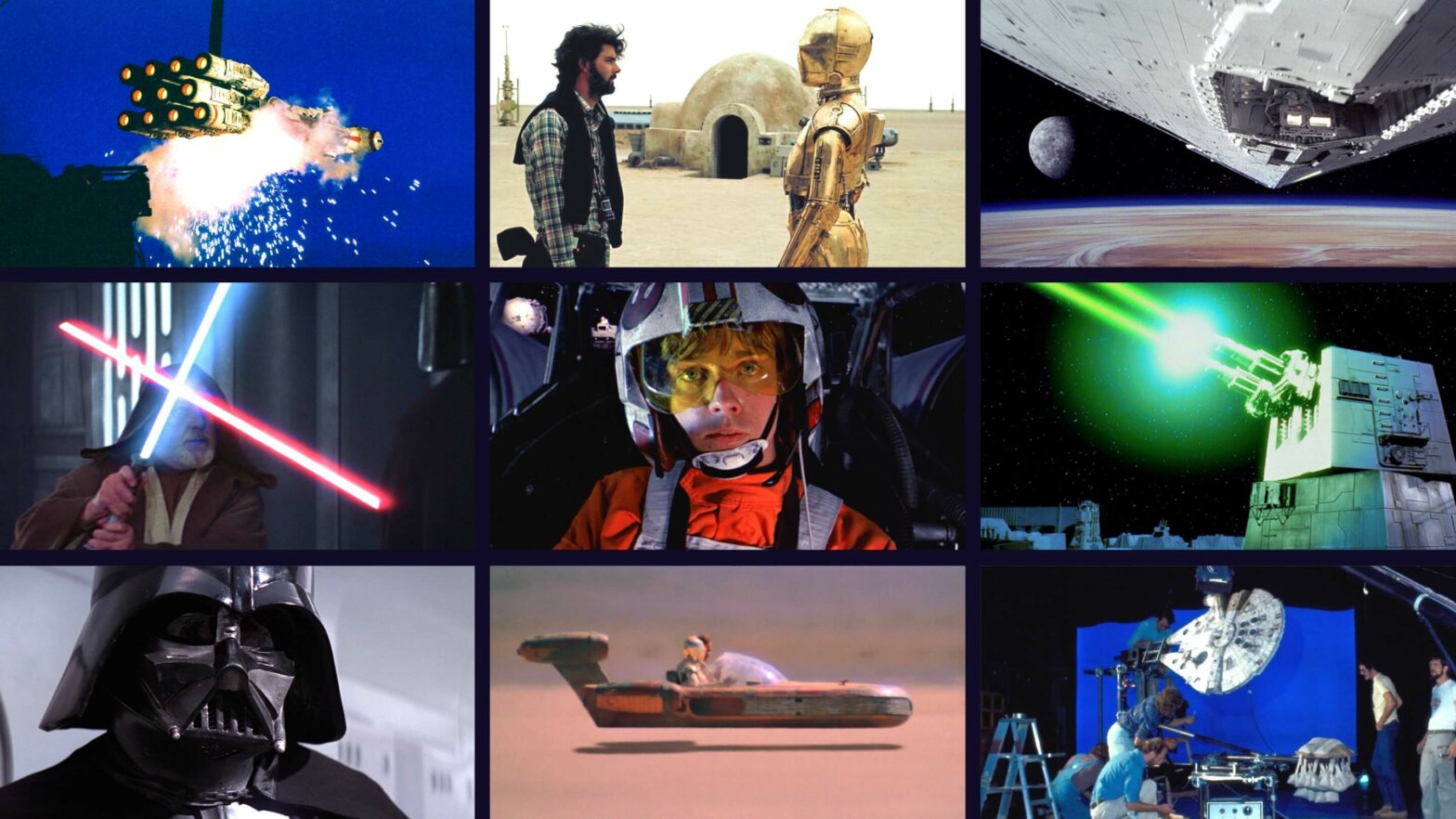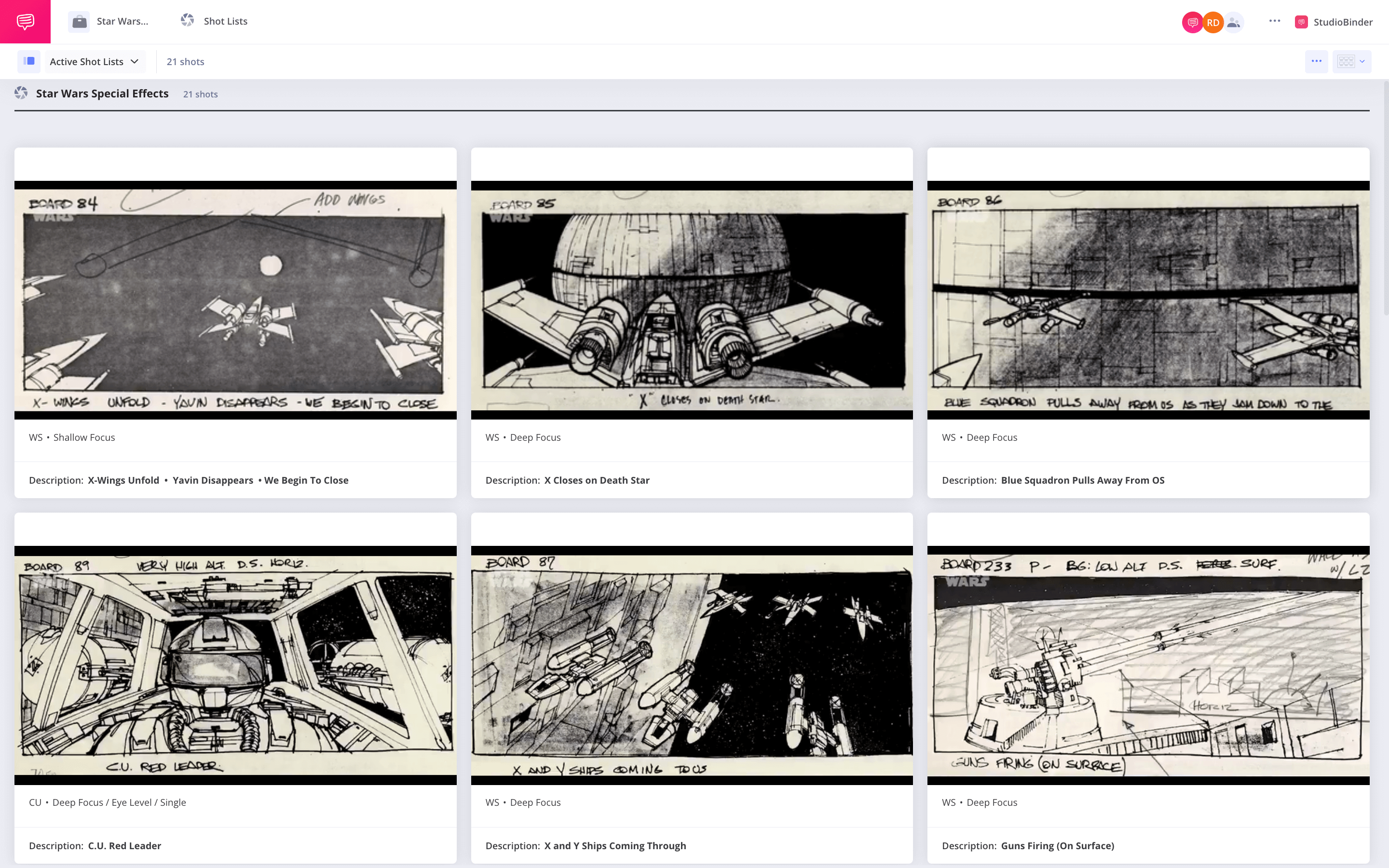It’s hard to overstate the importance of Star Wars. George Lucas’s crowning achievement marked the twilight of New Hollywood and the dawn of the blockbuster era of the 1980s. Any big-budget science fiction release since has operated under the shadow of Star Wars’ towering influence. There were many reasons for the success of Star Wars, but undeniably what set it apart from the rest of the competition was its special effects. Audiences in 1977 had never experienced anything like it. How did George Lucas and his team pull off what was thought to be impossible? How did they stretch their unremarkable budget to create an unforgettable universe?
Star Wars Special Effects
Inspiration from a galaxy far, far away
Before we get into the various effects Lucas employed in his science fiction masterpiece, it’s important to understand what went into the film’s laborious pre-production process.
George Lucas had been dreaming about making Star Wars since 1971, after he finished his debut feature, a much smaller-scale sci-fi film THX 1138.
He was inspired by Flash Gordon, and originally thought maybe he would simply adapt that IP.
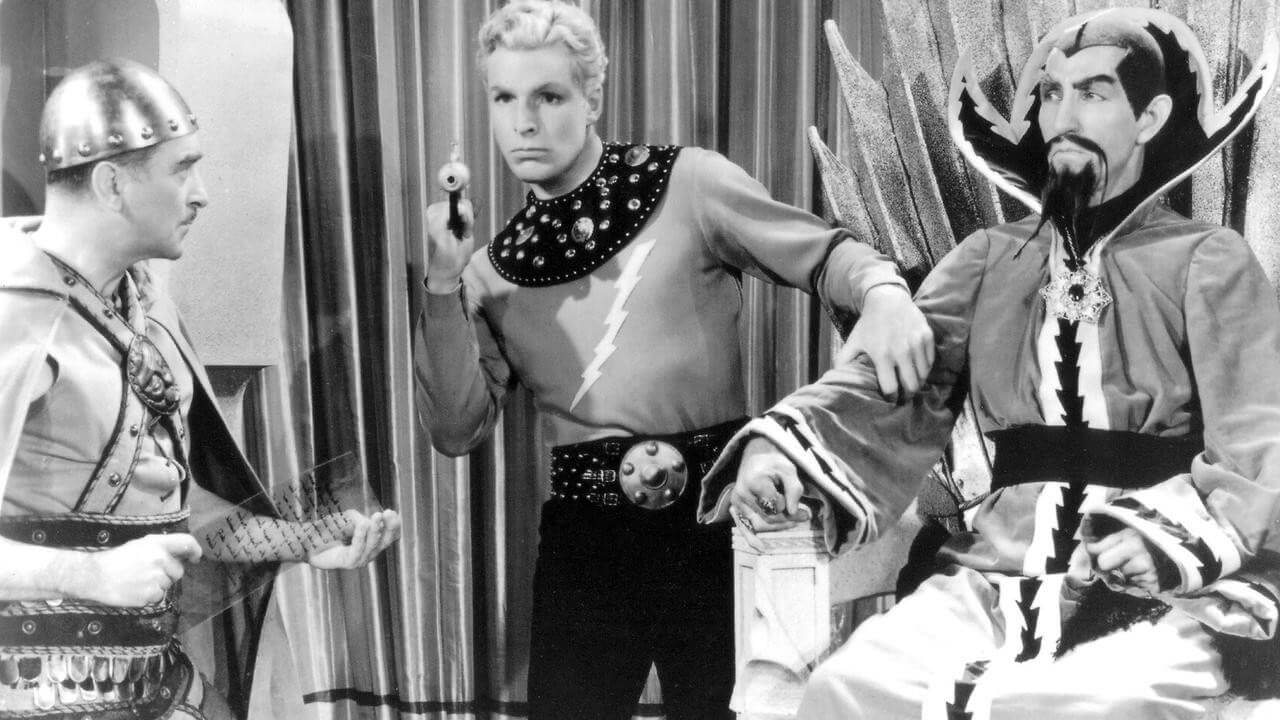
Flash Gordon • Star Wars Practical Effects Influence
But another producer had the rights for Flash Gordon, so Lucas started thinking up his own space epic that would be influenced by Gordon, John Carter, and other serials.
Meanwhile, Lucas had agreed to make his second film, American Graffiti, so he shelved his space opera for a couple years. When he returned to the concept in 1973, he dove in headfirst, writing for hours and hours, day after day. Here you can read the finished script for Star Wars: A New Hope.
When he finally thought the concept was ready, he and producer Gary Kurtz pitched the project all around tinseltown, and were rejected repeatedly. Finally, 20th Century-Fox agreed to finance the film, but Alan Ladd, the head at the time, was less interested in the special effects of the project than he was with George Lucas as a director.
Thus, the Star Wars’s budget ended up much smaller than other large productions at the time. While Superman and King Kong were working with $55 million and $24 million respectively, Star Wars had only $11 million. This meant that Lucas’s expansive vision somehow needed to be realized without breaking the bank.
Star Wars Special Effects
Star Wars practical effects explained
Practical effects played a major role in building out the world (or, rather, worlds) of Star Wars. Of course, practical effects have been used by films since the inception of the medium, but Lucas and his utilized preexisting concepts and pushed them to new heights.
Any involved sequence had to be broken down into individual shots and completed one at a time. To illustrate this, here's a storyboard from the iconic Death Star trench run we put together using StudioBinder's storyboard creator.
Star Wars Death Star Trench Run Storyboard
One of the most important practical effects which were reused throughout the original Star Wars trilogy were matte paintings. The decades-old technique allowed for Lucas to shoot awe-inspiring wide shots without building massive (and expensive) sets.
STAR WARS VISUAL EFFECTS
What is Matte Painting?
Matte painting refers to painting landscapes to create the illusion that a scene is taking place within that environment. Traditionally, this technique was done on transparent plexiglass, so that anything not painted could be seen by the camera. Now, mattes are done using computers.
The matte artist would need to match the exact camera angle, lighting, and coloring of the live action portion of a shot. Take a look at one of the matte paintings from the film:
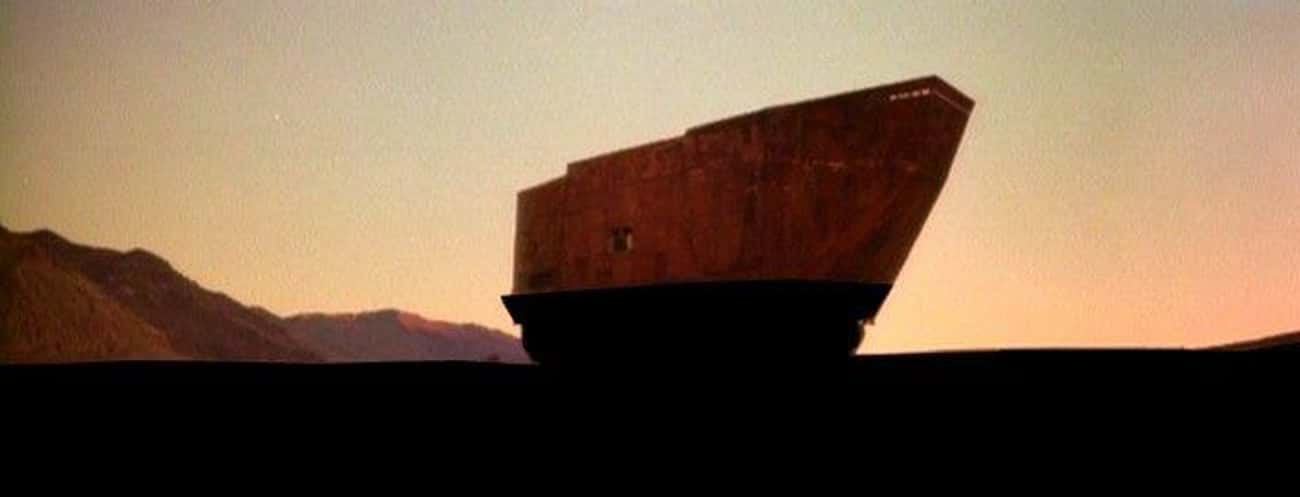
Matte painting
The black areas in this frame would be filled by what was in front of the camera on set. Check out the final scene which incorporates this painting:
Jawas • Star Wars Practical Effects
For more on matte paintings in Star Wars, check out this video — obviously, you should watch the whole documentary but we've timestamped the video for the specific discussion of the matte paintings.
Matte paintings • Star Wars visual effects
Creating a Galaxy
Gritty and lived-in production design
But the practical effects didn’t stop at paintings. The innovative production design on Star Wars changed the dominant aesthetic of science fiction films forever.
Most sci-fi before Star Wars had a similar look. Futuristic worlds were depicted as sterile and clean — it often seemed as though characters were moving from surgical room to surgical room.
George Lucas wanted to go against this look, creating a gritty, space-trash feel. The result was sets that felt real and lived-in. Take, for example, the Millennium Falcon.
The iconic ship • Star Wars special effects
Luke calls the craft “a piece of junk” when he first lays eyes on it, and rightly so. But the ship’s run-down design does more than just build out the world. It also informs us of the characters that use it – just one look at the interior and we learn a lot about Han Solo. This is a cynical bachelor who’s well-versed in under-the-table dealings.
Props, too, were crucial to building out the Star Wars universe. Luke’s Landspeeder provides a great example of the crew using simple techniques to create other-worldly effects.
There were two ways the Landspeeder moved. One was with a giant crane arm, where the camera would be angled so that the vehicle appeared to be levitating. The other was by hiding a small car within the prop itself.
Of course, this presented a problem: the “levitating” vehicle now had wheels. To solve this without breaking the bank in post-production, the team simply attached a mirror to the bottom of the Landspeeder, so that the desert horizon would be reflected back at the camera.
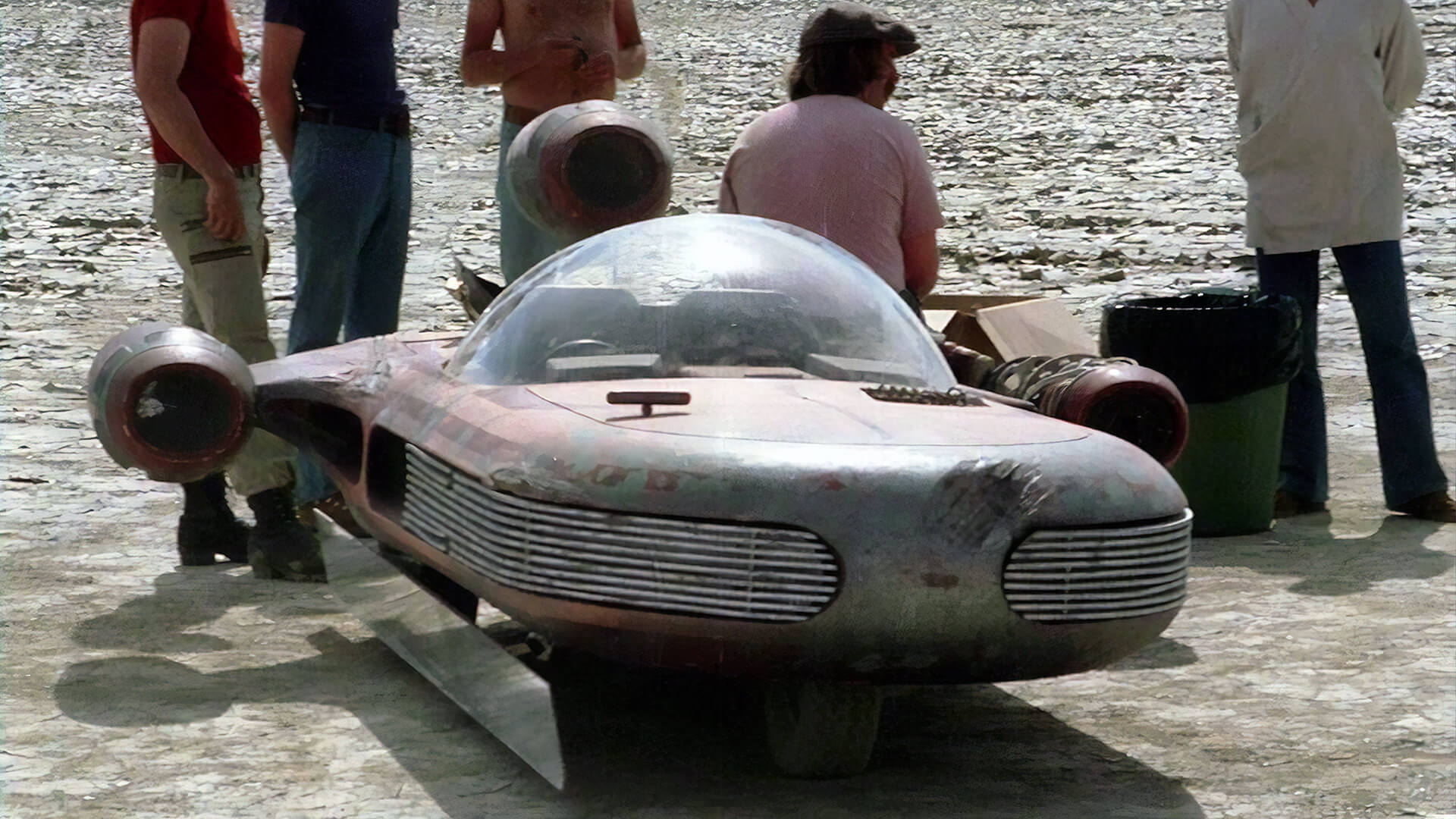
The landspeeder and the mirror • Star Wars CGI
It was ingenious tricks like this that made Star Wars come alive without running up a magic budget. You can find more information on the various props built for the movie in these great behind-the-scenes interviews:
How were special effects done in Star Wars? • Star Wars CGI
Of course, not all of the Star Wars special effects could be done practically, however. Let's talk about how Lucas and the team at ILM pushed the technology to capture groundbreaking visual effects.
Did Star Wars Use CGI
The evolution of compositing Effects
Where Star Wars really broke new ground was with its post-production effects. If you're wondering, "Did Star Wars use CGI?" The answer is no. The space battles that act as some of the most visually impressive set pieces in the entire film were accomplished through never-before-used compositing techniques.
George Lucas had a very specific idea of what he wanted the spaceship gun fights to look like. He showed his effects team footage of World War II dogfights, which had a kineticism to them that had yet to be achieved in narrative film, especially with starships.
Star Wars Visual Effects • Dogfighting in Space
Lucas knew his requests would require a massive amount of effort, so he founded the special effects studio Industrial Light and Magic. There, Star Wars special effects supervisor John Dykstra came up with a whole new way to composite film.
Dykstra and his team knew they needed to find a way to use compositing technology with a dynamic, moving shot. Before Star Wars, camera movement on composited shots was exceedingly difficult, because the foreground and background shots had to move in unison so that the perspective wouldn’t be incongruous.
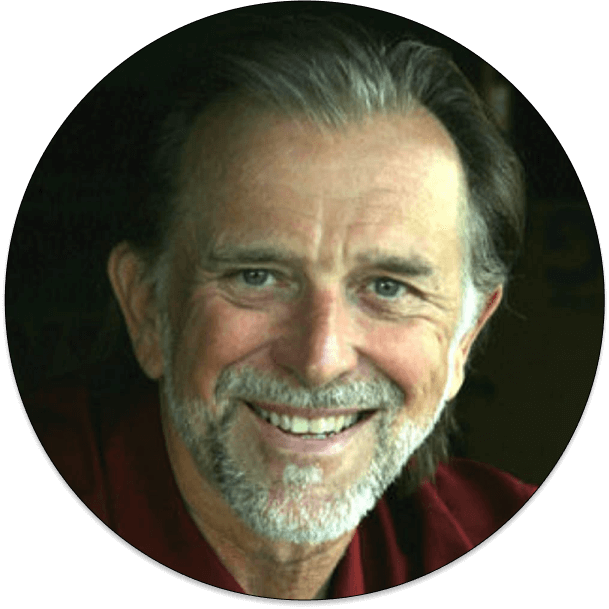
“Back in the days of Star Wars, we kind of walked into an empty warehouse and sat on the floor and went, ‘How are we going to do this?’ The producers, Gary Kurtz of Fox and George Lucas, took an incredible risk by listening to what myself [sic] and my collaborators had to say.”
— John Dykstra on Star Wars Special Effects
So Dykstra created a camera system that was dubbed the Dykstraflex. Essentially, the system allowed for effects artists to program certain camera movements that could be replicated over and over again with precision. This way, the camera could move around, and the perspective from shot to shot in the composite would match.
The system was a computer, but a very, very primitive one.



“The whole thing was wire-wrapped. It was TTL logic and there was no CPU to speak of in it. Essentially it was numeric control with a front end on it.”
— John Dykstra on the Dykstraflex
It may have been barebones, but the system worked magic. The team could create dynamic, composited shots that matched the kineticism of the dogfight footage Lucas had brought in.
All of these shots would be combined using an optical printer, a machine which uses projectors to shine multiple images onto a single piece of film.
Of course, this only scratches the surface of how compositing worked on Star Wars. If you’re curious to learn more, check out this video below:
Optical printing • Star Wars CGI
Another way to have pulled off the space dogfights would have been to use stop motion, where the team could have altered the position of the spaceships from frame to frame.
But this process would have been massively time consuming, and the result wouldn’t have been nearly as realistic. With stop motion, there is no motion blur, because the camera is capturing a still object. This makes the movement feel slightly jittery, even if you’re doing a new frame every 24 seconds. For more on how frame rates work, check out our other article.
But with the Dykstraflex, the team could film in real time, and thus capture the motion blur, creating smooth and natural movement.
The ILM team pushed compositing technology into a whole new era. To understand ILM’s accomplishments in the context of the history of compositing, check out this video below.
Compositing history
With its commitment to state-of-the-art visual effects, it’s no wonder why ILM is still a highly sought-after studio to this day.
Star Wars Special Effects
Sound effects in Star Wars
Not all of Star Wars’ effects were visual. A crucial element in the franchise’s universe is its distinct and instantly recognizable sound effects.
To understand just how important the lush soundbed is to Star Wars, just take a look at the footage stripped of any sound design:
Star Wars BTS • How Star Wars changed special effects
Even with iconic costume and production design, the scenes just don’t feel real.
This is where sound designer Ben Burtt came in. Burtt made the sound of Star Wars stand apart from other sci-fi films by using natural sounds that he found in the field. Whereas most sci-fi films at the time sounded cold and electronic, Burtt created what George Lucas called an “organic soundtrack.”
Burtt’s approach worked perfectly for a film like Star Wars, which had grand ambitions but not a lot of money to achieve them. Take a look at this interview, in which Burtt details his time on the movie.
Star Wars sound design explained
Nothing was off the table when Burtt was creating sounds for Star Wars. To create the sound of the blasters, Burtt recorded himself hitting a wire on a radio tower with a hammer. The sound of the lightsabers was even more unconventional: Burtt combined the sounds of a film projector and a broken TV, and then re-recorded them while swinging his microphone around to create the feeling of movement.
Burtt’s approach to Darth Vader resulted in the inadvertent creation of a massive plotpoint in later films. Burtt created Vader’s breathing by putting a microphone inside a scuba regulator. This sound was so effective that it spurred Lucas to come up with the idea that Vader is a burn victim.
Clearly, Lucas was happy with Burtt’s work. Burtt went on to work as sound designer on the rest of the (pre-Disney) Star Wars films, and was even editor on the prequels.
The chances that Star Wars took are an indelible part of its success. The film captured the hearts and minds of the world with a fantastical story and even more fantastic effects.
Up Next
The Making of Titanic
Now that you know how George Lucas made one of the most successful movies of all time, time to learn how James Cameron made… one of the most successful movies of all time. Spoiler alert: like Star Wars, it wasn’t easy.
Up Next: Making Titanic →
Showcase your vision with elegant shot lists and storyboards.
Create robust and customizable shot lists. Upload images to make storyboards and slideshows.
